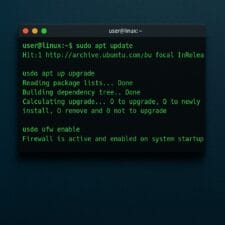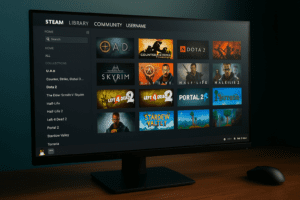Firefox on Linux: Tips and Tweaks to Improve Performance

Is Firefox running slow on Linux? Does it freeze when opening multiple tabs or just not work as expected? Don’t worry, you’re not alone. Although Firefox is one of the most used browsers on Linux due to its respect for privacy, sometimes it can run slower than it should.
But stay calm. You don’t need to change browsers or reformat everything. With a few simple tweaks and tricks, you can make Firefox run much smoother and faster. Below, I’ll explain what to change, how to do it, and why it’s worth it—to improve and optimize your browser.
1. Disable Unnecessary Animations
Firefox has several visual animations that, although they look nice, consume resources. To disable them:
- Type
about:configin the address bar. - Accept the warning.
- Search for these options and set them to
false: toolkit.cosmeticAnimations.enabledbrowser.tabs.animatebrowser.download.animateNotifications
This reduces RAM usage and improves overall speed when switching tabs.
2. Adjust Cache for SSD or HDD
If you use a modern SSD, you can reduce disk cache usage (since it’s already fast). If you’re using a slower disk, it’s worth keeping it enabled.
To view or adjust this:
- In
about:config, search forbrowser.cache.disk.enable trueif you use an HDDfalseif you have an SSD and want it to use more RAM- You can also change
browser.cache.memory.capacityto make it use more RAM (e.g.,65536for 64 MB)
3. Increase Process Limit
Firefox uses multiple processes for tabs. By default, it’s limited. Increasing it can improve performance on PCs with more than 4 GB of RAM.
- Go to
about:config - Search for
dom.ipc.processCount - Change the value to
8or more (depending on how much RAM you have)
This helps Firefox handle multiple tabs better.
4. Use Lightweight Extensions
Don’t install 30 extensions “just in case.” Some consume many resources and slow down your browsing.
Recommended extensions:
- uBlock Origin: Blocks ads without slowing down.
- Auto Tab Discard: Suspends inactive tabs to save memory.
- ClearURLs: Removes tracking parameters from links.
Tip: Avoid duplicate extensions or ones that do the same thing.

5. Enable WebRender (if your GPU supports it)
WebRender improves graphic performance by using the GPU instead of just the CPU.
- In
about:support, check if it’s enabled. - If not, go to
about:configand change: gfx.webrender.alltotrue- Restart Firefox
This greatly improves animations, videos, and heavy websites.
6. Remove Old or Corrupt Profiles
Sometimes Firefox saves old settings that slow things down. You can create a new profile and see if it improves:
- Open Firefox with
firefox -P(from the terminal) - Create a new profile
- Try browsing from that new profile
If the new profile runs better, export your bookmarks and settings to the new one.
7. Use a Blank Start Page
It seems minimal, but it helps:
- Go to Preferences > Home
- Change “Home page” to
about:blank
This makes Firefox start faster without loading content right away.
8. Disable Pocket and Suggestions
Firefox comes with Pocket enabled, which suggests articles. If you don’t use it, turn it off.
- Go to Preferences > Home
- Disable “Recommended by Pocket” and “Search suggestions”
Fewer distractions and a cleaner, simpler start.
9. Manually Clear Cache
Every now and then, it’s good to clean the cache:
- Go to Preferences > Privacy & Security
- Scroll down to “Cookies and Site Data”
- Click “Clear Data”
This helps free up space and fixes some slow loading issues.

10. Check Extensions Running in the Background
Sometimes we install extensions that spy or make constant server calls. From about:performance you can see which ones use the most.
If you see an extension you don’t use or that uses too much—uninstall it.
Extra Tip: Use Firefox ESR (Extended Support Release)
Firefox ESR is a much more stable version with fewer constant changes. Ideal if you don’t care about having the “latest” and prefer better stability.
You can install it like this:
sudo apt install firefox-esrIt’s not mandatory, but it may perform better on more modest systems. (It can help you.)
Summary
Firefox on Linux can run very well—if you tweak it properly. The good part is that you don’t need to switch distros, browsers, or PCs. Just make a few changes.
- Fewer animations
- More control over cache and processes
- Useful extensions and nothing more
- And avoid features you don’t use
With that, you’ll gain more speed, fluidity, and less resource consumption.
And you—have you already made any of these changes? Do you use Firefox or prefer another browser? Tell me in the comments.
Do you enjoy the content we share?
Want to help improve our blog?
You're invited to fill out this form.

Scan to open form





